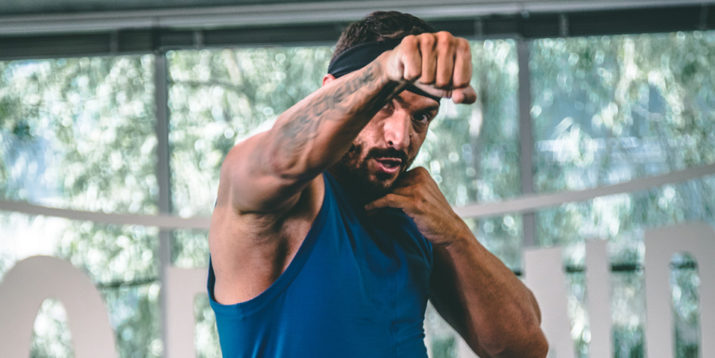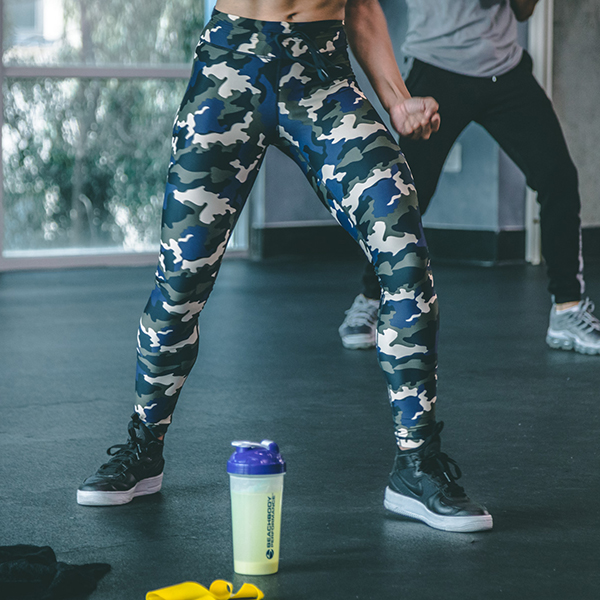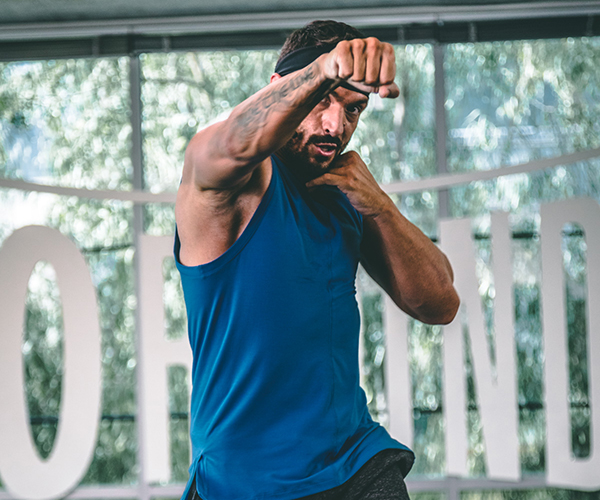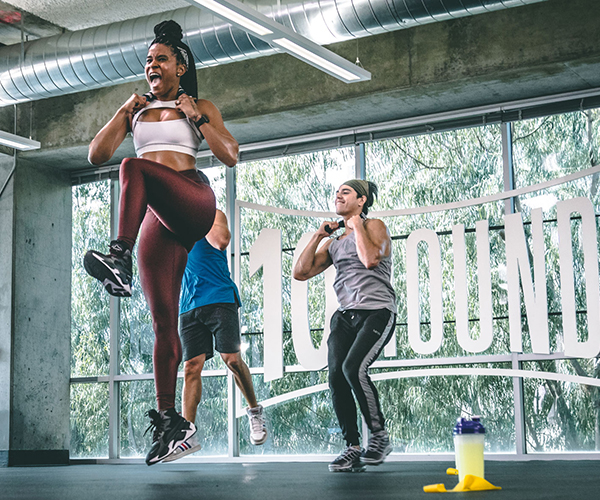Boxing Basics: A Guide for Beginners

To the untrained eye, a boxing match can look like two people trading punches willy-nilly.
But step into the ring, and you’ll quickly discover that your success as a fighter depends on a good working knowledge of boxing basics.
Boxing basics form the technical foundation of your movements, whether you’re hitting a bag, sparring with a partner, or getting in a killer shadowboxing workout with Beachbody Super Trainer Joel Freeman.
Here’s a primer of the boxing basics you’ll need to feel confident throwing that first punch.

Box Basics: Stance & Footwork
In boxing, fists get all the glory, but boxing basics start with the feet.
To create a solid base, stand with your feet a little wider than shoulder-width apart.
Brian Missirlian, certified personal trainer and instructor at Jabz Boxing in Phoenix and Scottsdale, Arizona, instructs beginners to stagger their feet.
“The feet are staggered so the individual is balanced and able to move with ease,” he explains. “Right-handed people start with their left foot forward, and left-handed people start with their right.”
This will position your dominant hand further away from your opponent or bag, allowing you to capitalize on your core’s rotational force with every punch.
To rotate your body and generate that force, you need to pivot on your back foot as you punch. Rotate the hips to transfer the power through the hips and core as you punch.
To pivot — another basic boxing move — lift your heel, press the ball of your foot into the ground, and swivel your heel outward.
If you’re throwing a jab, a basic boxing punch that uses the front hand, you want to “use a small push from your back foot to push into or step into the jab as you throw,” says Tatiana Firpo, certified personal trainer and instructor for beRevolutionarie, a digital wellness, fitness, and mindfulness platform for women.
“The jab measures the distance between you and your opponent, so stay angled in your stance.”

Boxing Basics: Offense vs. Defense Moves
No matter which of the basic boxing punches you’re throwing — the cross, jab, hook, or uppercut — it’s important to keep a few boxing basics in mind:
- To make a fist, curl your fingertips in toward the center of your palm and wrap your thumb around your fingers just underneath your knuckles. Never tuck your thumb underneath your fingers.
- Between punches, keep your hands up by your face and your elbows tucked in. This on-guard position protects your face and torso and helps you strike faster and more efficiently.
- Keep your wrist straight and in line with your forearm, says Missirlian. This will protect your wrist and help you generate more force.
- As you approach your target, rotate your palm toward the floor and make contact by landing a punch with the middle of your fist, with your knuckles flush. Straighten your arm, but don’t lock it, says Jason Salter, certified personal trainer, boxing/kickboxing instructor, and co-owner of Forged Soul Fitness in Berlin, New Jersey. “Locking your arm can lead to hyperextension, resulting in injury,” he says.
Of course, when it comes to boxing basics, learning how to not get hit is just as important as nailing a solid punch.
Boxers rely on defense moves to protect themselves in the ring.
Common defense boxing basics include:
- Blocking. When a boxer blocks a punch, they use their gloves, arms and shoulder to deflect their opponent’s blows and protect their face and torso.
- Slipping. To slip, a boxer moves their head to the side of their opponent’s fist and arm. As the boxer moves, the punch slips by them.
- Roll. To roll, a boxer bends their knees and drops under and around an opponent’s punch.
Shadowboxing can help beginners master both offensive and defensive boxing basics, says Angel McNamara, co-owner of Fight Into Fitness and USA Boxing Coach.
“We shadowbox to visualize and work out our strategy,” McNamara says. “In the mirror, use yourself to target where to land your punches. Without a mirror, practice throwing a combination, then move after each completed combination. For example, slip off of the combination; move after the combination; roll after the combination. Practice constant movement. Hit and focus on not getting hit!”

Benefits of Boxing
In only takes a minute of basic boxing combos to get your heart rate elevated, making boxing a cardio workout that’s tough to beat.
Boxing’s fast, explosive movements can also help increase your speed, power, and agility.
Plus, boxing is a head game. Learning boxing basics and how to execute them requires strategy, quick thinking, and hand-eye coordination.
Boxing works every muscle in your body, so whether you’re after toned arms or tight glutes, boxing is a smart workout choice.
